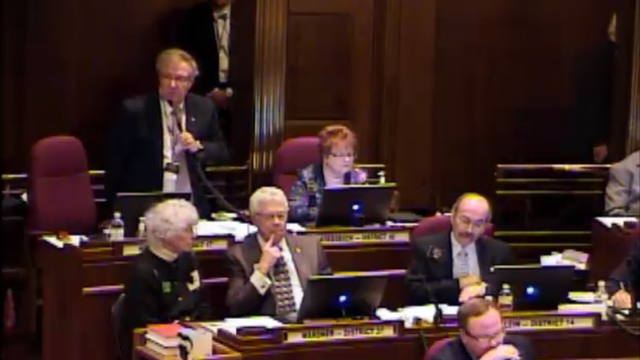When A 3 Percent Pay Raise For Public Employees Somehow Becomes A Pay Cut

I had some business/family stuff to attend to yesterday so I mostly missed the floor sessions in the legislature, but I had to comment on this because it’s pretty absurd.
The Senate Appropriations Committee has, prudently, begun to pare down spending bills because the state is facing billions of dollars worth of revenue uncertainties thanks to lower oil prices. Committee Chairman Ray Holmberg (R-Grand Forks) said the state’s revenue bridge “now has a load limit.”
Now, to be clear, nobody is proposing any spending cuts. The first appropriations bill brought to the floor deals with funding for executive branch employees. Governor Jack Dalrymple’s executive budget called for 4 percent raises for the state’s public workers. Holmberg’s committee reduced that to a 3 percent raise which, frankly, is still pretty generous.
But cue the flipping out from Democrats who quickly began to talk about the reduction in increase in spending on public workers as a cut:
Sen. Tim Mathern, D-Fargo, offered an unsuccessful amendment to restore part of the raises if revenues end up 5 percent above projections. He said state employees have worked hard and taken on additional burdens with North Dakota’s growth and increased demand for services, “while our coffers are filled with cash.”
“Let us not use our state employees as the first place to start saving money in this budget process,” said Sen. Connie Triplett, D-Grand Forks.
Public worker union flak Stuart Savelkoul was also disturbed, as you might expect:
Stuart Savelkoul, assistant executive director of North Dakota United, said the employees union has “major concerns” about the impact that 3 percent raises and the loss of equity funding will have on the state’s ability to attract and retain highly qualified workers.
“For us, the big concern is when you’re having a hard time filling state government positions, it’s a matter of public safety,” he said, calling the trimming of raises this early in the session “premature.”
But is the state really having such a hard time filling positions? According to the article, the state has a little over 8,000 classified and non-classified employees. According to the linked article, “The number of job openings averages 70 to 80, with engineers, medical workers and environmental scientists being among the hardest jobs to fill,” and that’s according to the state’s human resources director.
In other words, the average number of job openings in state government is less than one percent? That doesn’t sound like much of a problem.
The state has had some very real difficulties in hiring for specific positions. Case in point, the Public Service Commission has struggled to hire workers for their new pipeline inspection program. The state may need to offer more compensation for positions like that in order to attract qualified candidates.
But these isolated areas of hiring difficulties don’t really argue for excessive across-the-board pay raises for all public employees.
A 3 percent pay hike seems appropriate to me.




